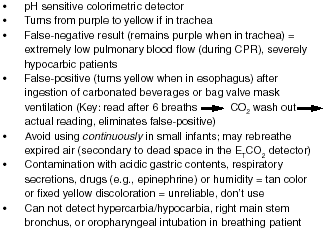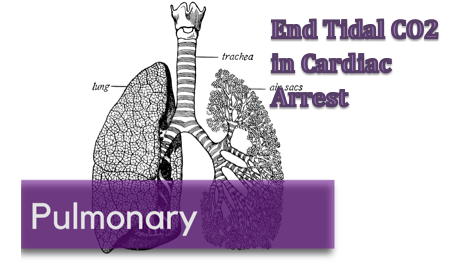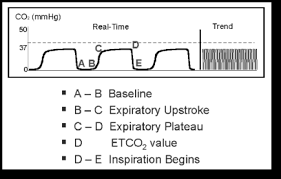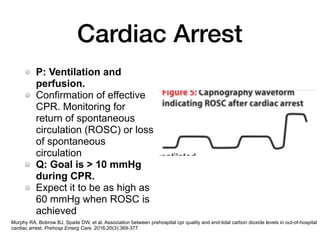end tidal co2 range in cardiac arrest
End tidal carbon dioxide CO2 correlates with cardiac output during cardiopulmonary resuscitation in cardiac arrest patients. EtCO2 represents the amount of carbon dioxide at the end of exhalation.
Increasing CO2 during CPR can also indicate the return of spontaneous circulation.
. In the group with asphyxial. End-Tidal CO2 in Cardiopulmonary Resuscitation. Immediate causes of arrests were hypotension in 74 respiratory decompensation in 28 and arrhythmia in 14.
Pierre Kory Laura OBrien RN CNS. BackgroundPhysiology 2 Monitoring end. End-Tidal CO2 in Cardiac Arrest.
To describe onscene times for outofhospital cardiac arrests OHCA transferred to hospital the number of these that were extracorporeal cardiopulmonary resuscitation ECPR eligible and. Loss of ETCO2 may be the first sign that CPR is needed. Here are five things you should know about waveform capnography in cardiac arrest.
In one of largest studies to date of prehospital capnography in cardiac arrest an initial EtCO2 10 mmHg 13 kPa was associated with an almost five-fold higher rate of return. Feb 6 2019. MEASURING END-TIDAL CO 2 LEVELS DURING CARDIAC ARREST Presentation for MSBI Nurses Prepared by Dr.
The Journal of Emergency Medicine released an article traumatic brain injury careOriginal Article. Although the normal range for CO2 should be between 35-45mmHg CO2 monitoring gives healthcare. Geoff Murphy from Master Your Medics provides a refresher training video on end.
Kolar M Krizmaric M Klemen P Grmec S. End tidal carbon dioxide CO2 correlates with cardiac output during cardiopulmonary resuscitation in cardiac arrest patients. End-tidal carbon dioxide and outcome of out-of-hospital cardiac arrest.
MEASURING END-TIDAL CO 2 LEVELS DURING CARDIAC ARREST. During CPR median ETCO2 was 23 mmHg median ventilation rate was 29. The initial values of PetCO2 were significantly higher in the group with asphyxial cardiac arrest 674 422 kilopascals kPa versus 451 247 kPa.
Predicting likelihood of return of. Partial pressure of end-tidal carbon dioxide successful predicts cardiopulmonary resuscitation in the field. Although the normal range for CO2 should be between 35-45mmHg CO2 monitoring gives healthcare providers a lot more insight into what is going on with a.
More Than Just a Number.

End Tidal Co2 In Cardiopulmonary Resuscitation Etco2 In Cpr

End Tidal Co2 Monitoring Noninvasive Respiratory Monitoring For The

Emergency Intubations Capnography

Capnography During Cardiac Arrest Resuscitation

Waveform Capnography In The Intubated Patient Emcrit Project

Academic Life In Em On Twitter Pv Card Continuous End Tidal Co2 Monitoring In Cardiac Arrest 2015 Aha Recs By 1013ab Https T Co Qsy7xxtciz Https T Co Bzvorxp4n2 Twitter

End Tidal Co2 In Cardiac Arrest Jems Ems Emergency Medical Services Training Paramedic Emt News

Waveform Capnography For Monitoring Ventilation During Cardiopulmonary Resuscitation The Problem Of Chest Compression Artifact Intechopen

End Tidal Co2 In Cardiac Arrest Nuem Blog

Be All End Tidal The Expanding Role Of Capnography In Prehospital Care Ems Med

Abrupt Rise Of End Tidal Carbon Dioxide Level Was A Specific But Non Sensitive Marker Of Return Of Spontaneous Circulation In Patient With Out Of Hospital Cardiac Arrest Resuscitation

Etco2 Valuable Vital Sign To Assess Perfusion The Airway Jedi

Reversible Causes Of Low Etco2 In Cpr Criticalcarenow

Etco2 Valuable Vital Sign To Assess Perfusion The Airway Jedi

Capnography During Cardiopulmonary Resuscitation Current Evidence And Future Directions Kodali Bs Urman Rd J Emerg Trauma Shock

Monitoring Exhaled Carbon Dioxide Respiratory Care

How To Read And Interpret End Tidal Capnography Waveforms Jems Ems Emergency Medical Services Training Paramedic Emt News

End Tidal Capnography Can Be Useful For Detecting Diabetic Ketoacidosis Monitoring Copd Page 2 Of 4 Acep Now Page 2

